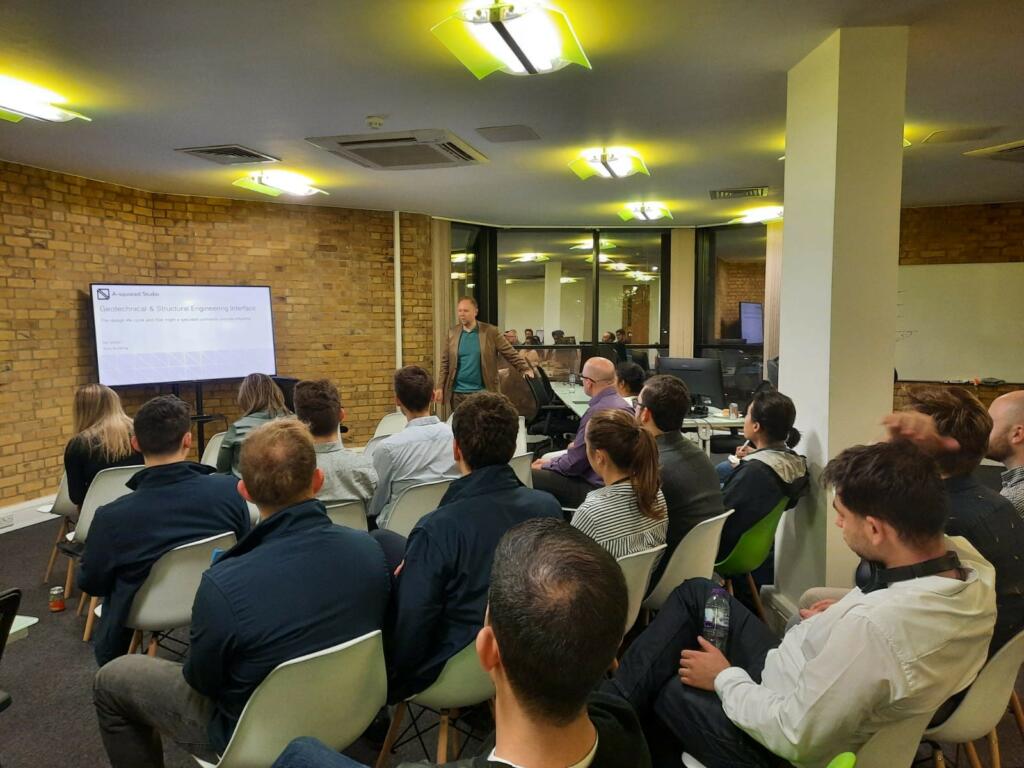
October’s Federation of Piling Specialists (FPS) Early Careers Group (ECG) event was held at the offices of A-Squared Studios in London on 20th October. Tony Suckling, Director of A-squared Studio, presented to individuals from the industry on ‘The design life cycle and how might a specialist contractor provide influence.’
There was a great representation from companies at the event, including: Bachy Soletanche, Keltbray, A-Squared, JRL Civil Engineering, Arup, VEDA Associates, Roger Bullivant, Network Rail, Plowman Craven and Ramboll. It was well attended by piling contractors and consultants, which allowed individuals to share experiences based on different aspects of their involvement on a project.
Tony briefly presented an overview of his career, discussing the projects he’d been involved in, in particular the ones where his involvement was noteworthy, but also the historic jobs which didn’t go to plan, in which he highlighted it is important to learn from these.
Tony started off providing an explanation of the RIBA design stages and a summary of the corresponding requirements. He then went into detail on each stage and explained why as contractors we commonly only receive information at particular stages. It was of particular interest to note that for RIBA stage 2, concept design, that the only requirements that are related to the ground strata are for environmental screening, which explains why site investigation (SI) provided at this stage is commonly shallow window samples rather than deeper boreholes. He went on to explain the other fundamental requirements to adhere to the planning application, such as concept foundation designs, constructability, and the impact on adjacent structures.
Tony explained that at stage 2 there seems to mismatch between what the client is willing to spend for site investigation to design an appropriate foundation solution, compared to what is actually allocated. It was discussed that the concept of having an additional phase of site investigation needs to be brought to the attention of the engineer or main contractor, in order to produce a sustainable geotechnical design.
He went onto discuss the design procedures at stages 3 and 4 and how the analytical modelling increases in complexity. It was interesting to understand the role of the structural engineer and their modelling approaches. Tony explained that once at stage 4 – technical design stage – for the design to be efficient in meeting all design deliverables and to generate an economic and sustainable solution, the geotechnical and structural engineers should liaise closely with one another, whilst having early contractor involvement should be encouraged.
When there isn’t early contractor involvement, the site investigation may have been carried out for a particular solution, e.g., ground improvement, so less investigation has gone into the stronger soils at depth and more information gained on soil stiffness within the shallower strata. However, if a contractor proposes a piled technique, the strength testing and depth of boreholes may not be sufficient and therefore additional site investigation required. Tony explained that in his view, if there were 2 stages of SI, then the first would meet the necessary requirements for planning, albeit less detailed, and the second would be more appropriate for the specialist contractor’s solution.
Overall, the presentation allowed individuals from consultants, piling contractors and representatives from clients to debate the importance of site investigation, appointment of contractors and their earlier involvement, framework agreements, whilst also discussing how the FPS could provide guidance on the matter.
